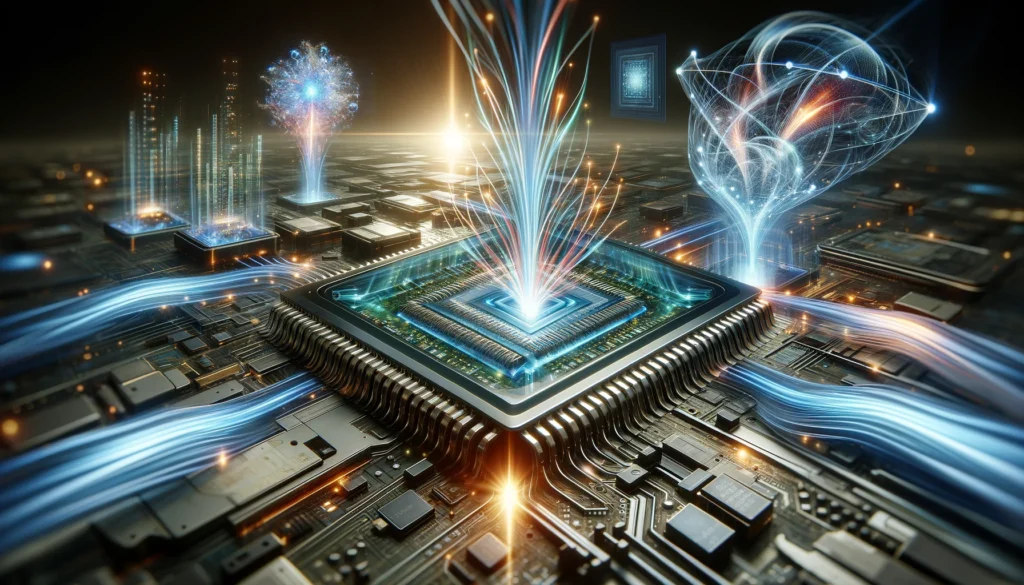- By quade
- 21 February 2024
Light Speed AI Computing Might Soon Be Possible with Microchips
In our digitized world, technology like microchips are worth more than gold. Everything from simple electric fans to supercomputers has a microchip that serves as the machine’s brain. Many people have realized this development as countries and companies with microchip production increasing.
This race isn’t just about production rate, but also complexity. With more machines requiring microchips, there is a need to have more advanced devices that can handle more functions.
The University of Pennsylvania has made an amazing development. Their engineers claim they have created a special chip that uses lightwaves instead of electricity to perform its functions. If this is successful, these new chips can open the way for data processes at speeds faster.
A Gamechanger in Data Processing
Reports of this chip first appeared in a paper published by Nature Photonics. Its engineers included Benjamin Franklin Medal Laureate, Firooz Aflatouni, and H. Nedwill Ramsey Professor Nader Engheta. They began this experiment to develop a platform that can perform vector-matrix multiplication. This is a mathematical operation critical in the development and function of neural networks. These are essential in the computer architecture that powers today’s AI tools.
They began this experiment to manipulate materials on a nanoscale level. By adjusting these materials, they hope that the chips will be able to perform computations at light speed, the fastest possible means of communication.
Light waves interacting with matter has been an idea well-known by scientists for decades and has often been touted as one way to increase the processing speeds of these devices. this would be a significant leap from the standard processing methods chips use which have remained largely unchanged since the 1960s.
If they accomplished this, it would make their chip the fastest processor in the world and significantly cut down energy usage.
How These Chips Are Made

They will combine this with the SiPh platform. This platform uses silicon which is cheap and a common tool used to mass-produce computer chips. Instead of having the silicone wafer being uniform height, they would have the wafers built at different lengths at specific regions. Those variations would not have other materials, allowing them to control the light that passes through the chip.
This allows the light to scatter in specific patterns. They believe they can harness these powers so the chip can perform mathematic calculations. Along with improving energy consumption, they also think there can be other benefits to these new chip designs. There can be privacy benefits because of how many computations can happen. This reduces the need to store the information in a computer’s working memory.
There are also high hopes that these chips can be mass-produced. Aflatouni believes that the design meets all commercial applications and could be used in the current GPU models on the market. This could be a game-changer as the demand for these units has skyrocketed with the adoption of AI technology.
Here at geniusOS, we are incredibly excited at the opportunities these new chips present and we look forward to the time where we can use them in our own hardware once they become available.



